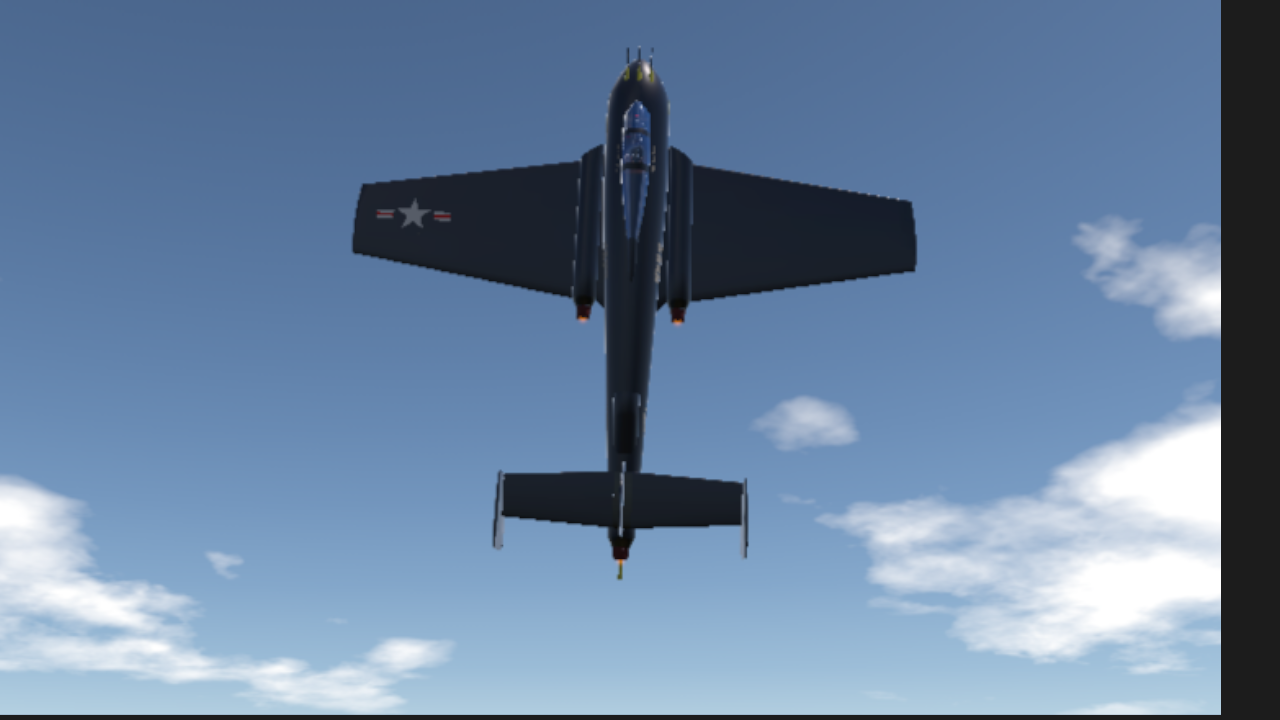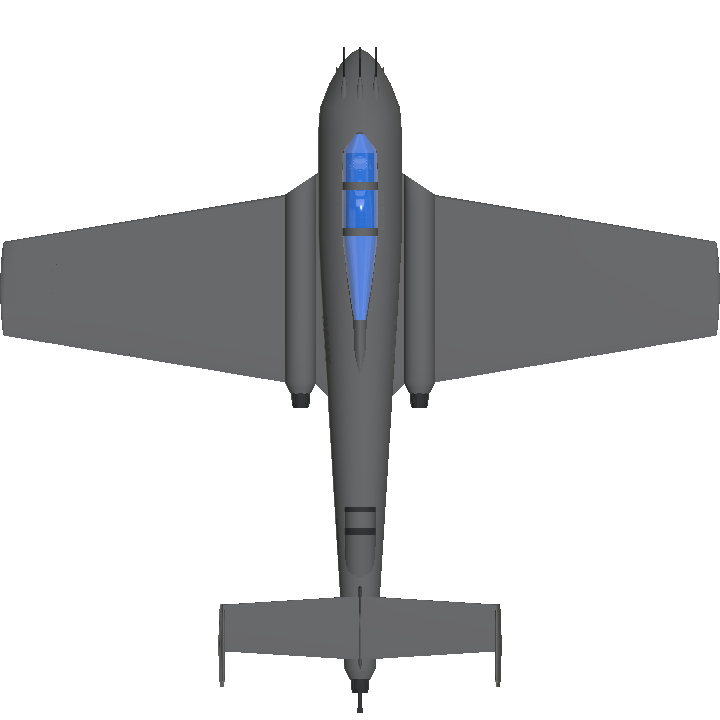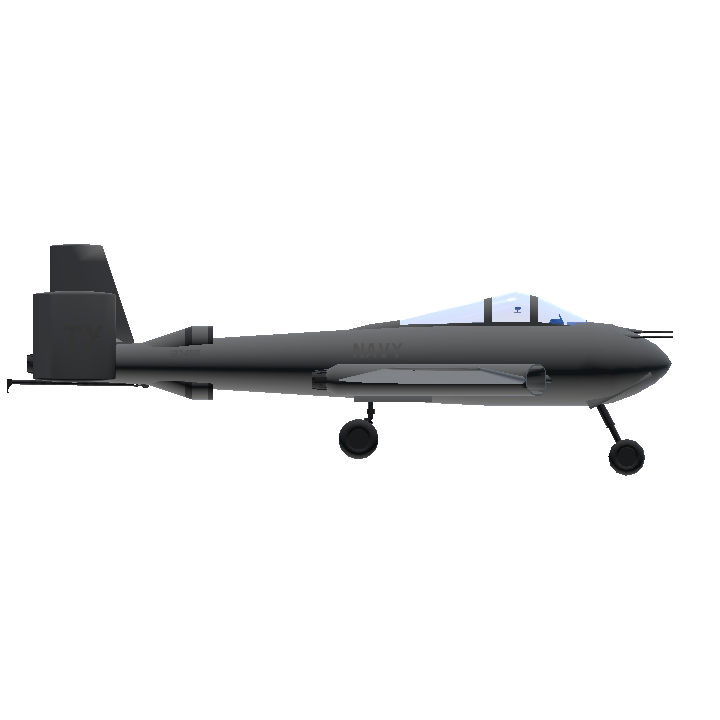Instructions (Included in game)
Max Alt: 55,000 Feet
Max Speed: 818 Miles Per Hour
Min Speed: 128 Miles Per Hour
Cruise Speed: 370 Miles Per Hour
AG1: Canopy
AG2: Hook
AG3: Fold Wings
VTOL: Flaps (Non-Functional)
Trim: Trim
Yaw: Yaw plus Gear Control
VR instructions (Not in game)
The yellow switch is the switch to set the hook down. The other switch is for catapult activation
Design
It's an early straight wing jet fighter, designed to both dogfights and intercept. It has a good turn rate, and I designed it with the idea of a pseudo rocket interceptor without the whole, you know, acid fuel and pilot asbestos suits.
I took inspiration from the FH1 Phantom, the first navy jet fighter. Let's just assume that this enter service in say, 1947. It's designed as a sort of mini Phantom, that has half the range and double the speed.
Inspiration comes from the FH1 for the sort of color scheme, idea and whatnot, along with inspiration from the P-80 Shooting Star, and some inspiration from my own tri tail of the B-61 and for the small change in Angel of tail from my PA-13-N
Oh yes, one more thing, this plane actually has a bubble canopy! Yes, I figured it out! I plane on using these sorts of canopies more often in the future.
CREDITS
ChiChiWerx for the rondel
TheBababooey for the gunsight
Lore:
The F-97 'Triguy' was a tri-engine, triple tail straight wing jet fighter and interceptor that emerged right after the Second World War. It was retired in 1951 for the Navy and 1952 for the Marine Corps.
In 1945, the Navy approached McDonnell to create the first jet fighter for the Navy. In 1946, they approached Fentson with the ability to both fighter high altitude and also dogfights at lower speeds. Taking inspiration from rocket fighters, it was decided that small engines would be used, and that the F-97 would have to be a mini FH1, including range, although as a point interceptor, range was a meaningless requirement.
The reason for the seemingly conflicting requirements of high altitude flight and low altitude many ability was due to the short term risk of things such as IL-10s, which requirement significantly more fire power to take down, as shown by the Il-2's performance during the war, and the long term risk of Soviet strategic bombers.
Maneuverability was quite good, having the best turn rate at 300-400 MPH, although a low stall speed mean that fighters could stall out and crash in a prolonged fighter.
Whilst advanced for it's time, at the end of the Korea war it was considered an obsolete one trick pony, only being able to climb quickly away when faced with any true opposition, such as MiG 15s.
Ultimately, it was a Interim solution to combat Soviet tactical bombers and later strategic bombers such as the Tu-4 in the immediate post war period.
Play style:
Imagine a Me-163 that can turn fight. Yep, that's this thing. Despite what the state card says of a power to weight difference of 6.516, it's actually 1.629, which is still high, but the engines are capped at .25 because than this would turn from a jet that cosplays as a rocker fighter to a rocket fighter that cosplays as a jet.
You can't out speed nothing, and the moment you pull down on the throttle, you bleed energy very quickly and gain it back at a reasonable pace. You have 3x AN/M3 (20mm), which hit hard if you just get a few rounds on target. They fire fast, but have only 210 rounds between them, which isn't a lot.
For play style, I recommend boom and zoom for bombers and turn fighting for fighters. For bombers, dive down as steep as an angle as you can, get as close as you can, and release a small burst.
For fighters, turn fight until they stall, get close and release a burst. If you can't do that, climb as quickly as you can and use energy to regain control. If you're simply outclassed, climb and don't come back.
I hope you enjoy.
Specifications
General Characteristics
- Created On Android
- Wingspan 28.3ft (8.6m)
- Length 27.7ft (8.5m)
- Height 9.1ft (2.8m)
- Empty Weight 5,446lbs (2,470kg)
- Loaded Weight 6,207lbs (2,815kg)
Performance
- Power/Weight Ratio 6.516
- Wing Loading 34.4lbs/ft2 (168.1kg/m2)
- Wing Area 180.3ft2 (16.8m2)
- Drag Points 2839
Parts
- Number of Parts 298
- Control Surfaces 3
- Performance Cost 1,255





@X99STRIKER
just realized I got a weird crop. i ain't fixing it.